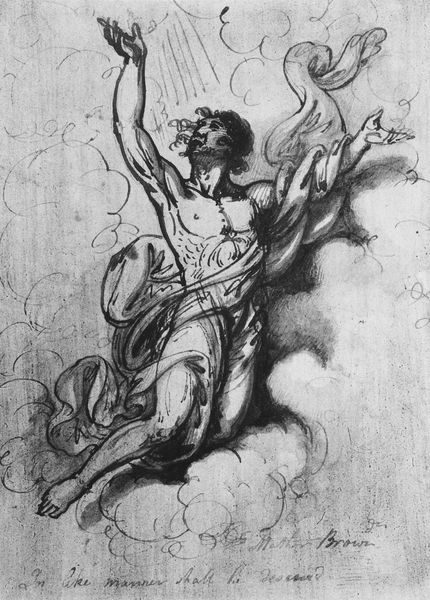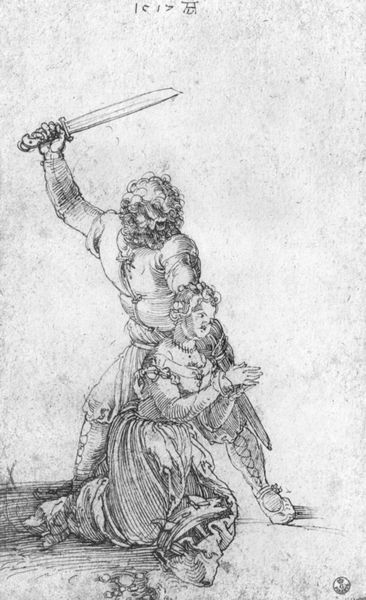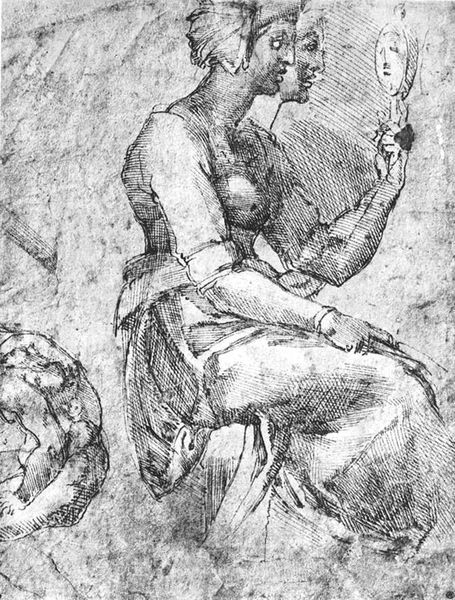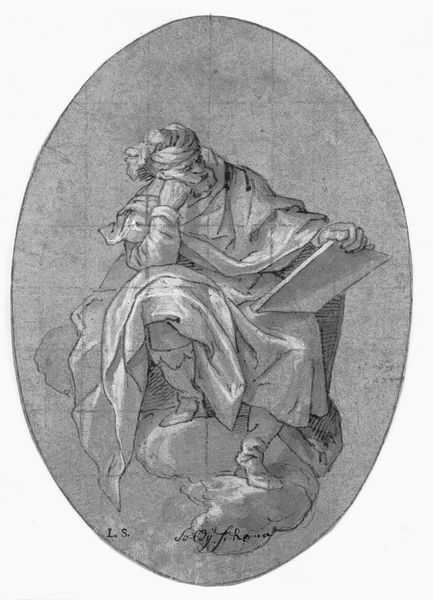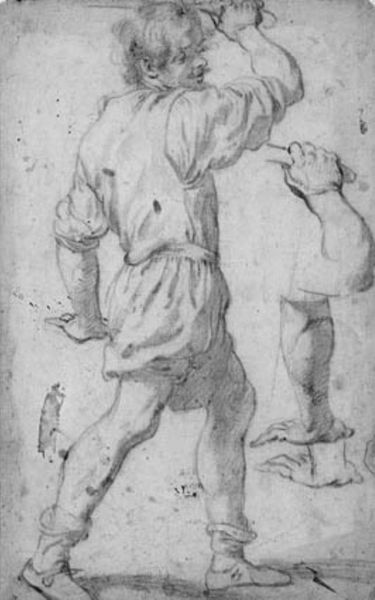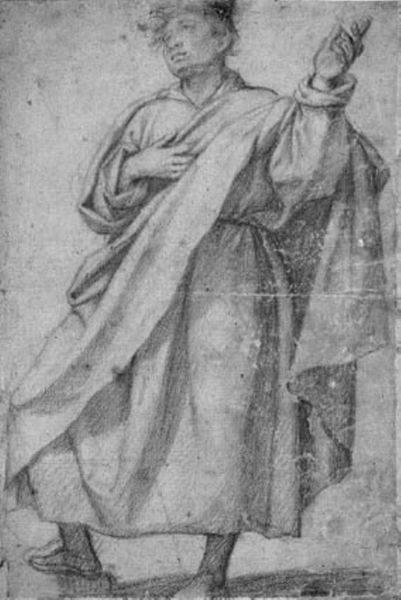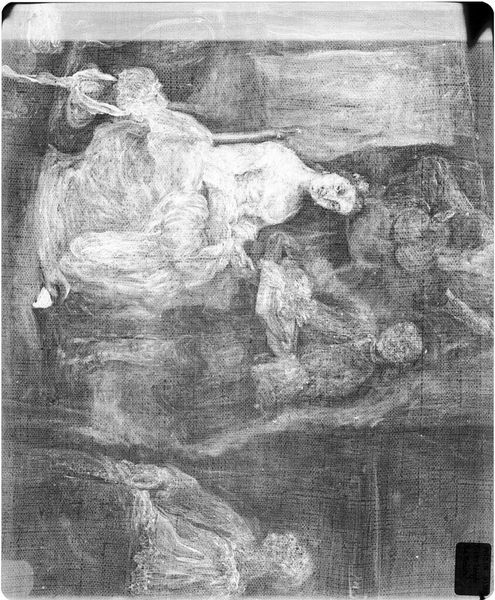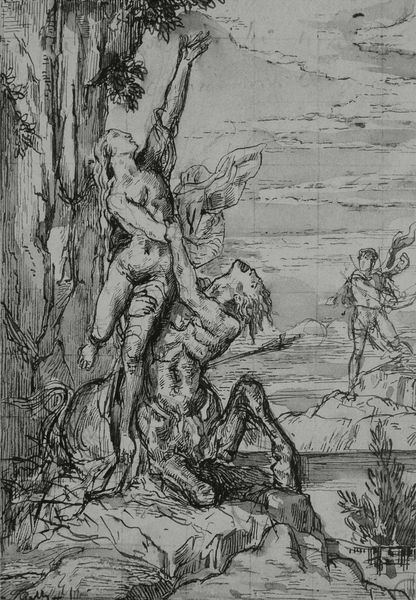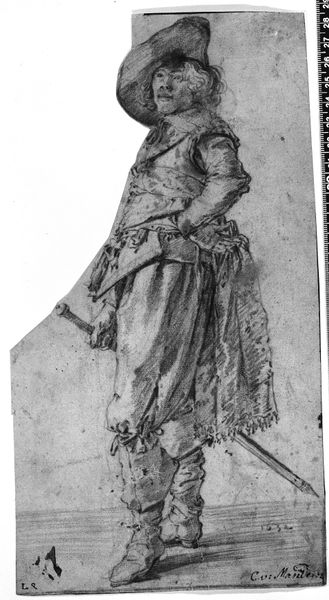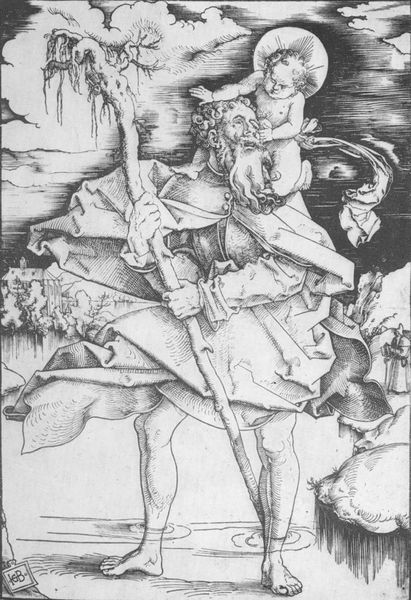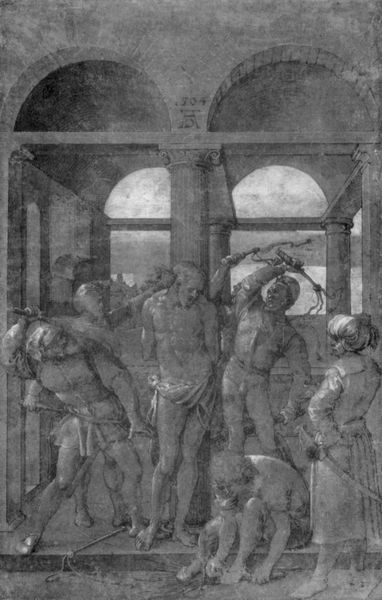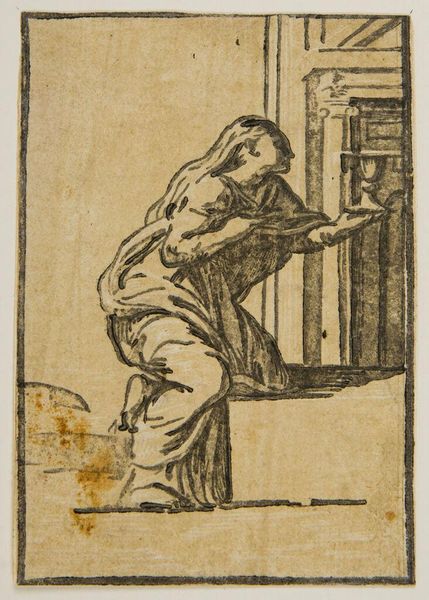
Copyright: Public domain
Editor: This is Albrecht Dürer’s “St. Christopher,” made in 1521. It's an engraving showing St. Christopher carrying the Christ Child across the water. The detail is incredible! What do you see in this piece, beyond the immediate narrative? Curator: Well, beyond the surface, I see a complex commentary on power and burden, relevant even today. Think about how the dominant narratives, especially around faith, are often carried by the marginalized. St. Christopher, typically depicted as a giant, is humbled by the weight of the Christ Child, symbolizing a different kind of power—a spiritual one. But what does it mean for him, literally bearing that weight? Editor: That’s fascinating. So, you're suggesting this image challenges traditional notions of strength and leadership? Curator: Exactly. It pushes us to consider the role of those who carry the metaphorical weight of societal expectations. Think about the political implications; Dürer was creating this work during a period of intense religious and social upheaval, wouldn’t you agree that there's a subtle commentary on the burdens imposed by the Church and the State on the common people? Editor: Definitely! It makes you think about who is being asked to shoulder these burdens, and what that represents in terms of social justice. Curator: Precisely! And Dürer's choice of printmaking—a medium accessible to a wider audience—further amplifies this activist intent. Editor: It’s incredible how much meaning can be packed into one image when you consider its historical context and potential political readings. Thanks! Curator: Absolutely. Seeing art through a critical lens can truly transform our understanding of both the artwork and the world around us.
Comments
No comments
Be the first to comment and join the conversation on the ultimate creative platform.
